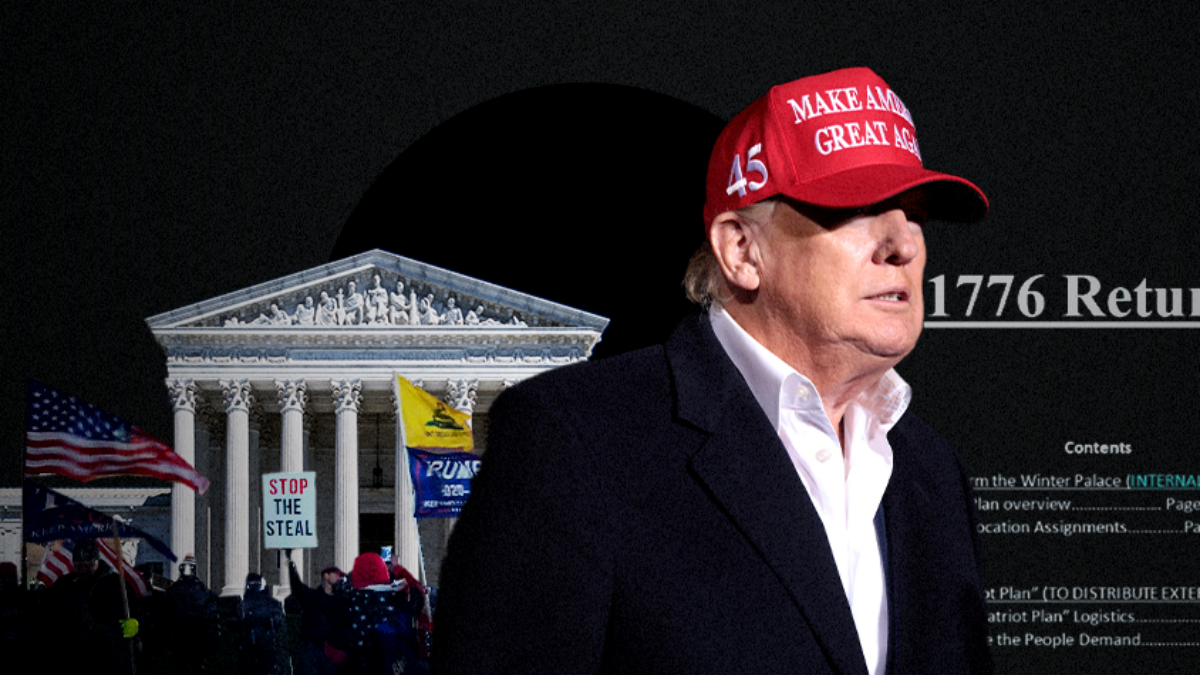Donald Trump: Threatening courts and undermining justice

What you need to know:
In a joint report, CREW and Common Cause find that former president Donald Trump and his allies targeted the judiciary in the days, weeks and months leading up to the January 6th attack, and their continued attacks on our courts and government institutions could lead to significant threats in the future. The “Stop the Steal” movement’s targeting of the judiciary included plans by a known white supremacist group to encourage their supporters to occupy court buildings and direct threats toward the Supreme Court.
The insurrection at the Capitol on January 6th, 2021, represented an inflection point in Donald Trump’s sustained assault on democratic processes and institutions. It was the culmination of months of lies and fearmongering attacking a number of democratic institutions—from state legislatures to courts and polling places—in an attempt to overturn the 2020 presidential election. Trump is now under criminal indictment in federal court and state court in Georgia for the actions he took in his effort to overturn the election and disrupt the peaceful transfer of power.
Targeting the Capitol on January 6th, rather than other buildings on other dates, was a strategic choice. The congressional certification of the electoral vote was just one of many crucial moments—and Congress just one of many institutions—where Trump attempted to exert pressure in the aftermath of the election. While Trump ultimately chose to focus on Congress’s certification of the electoral vote, various other federal, state, and local institutions were potential targets in the leadup to January 6th. It’s unclear exactly why these attacks did not fully materialize, but the lack of specific call to action could have played a part. This is in contrast to Trump’s specific call for his followers to come to Washington D.C. on January 6th for a “wild” event at the Capitol. Given the continued incendiary, anti-democratic rhetoric toward government institutions and officials coming from extremist groups and leaders, it is not inconceivable that Trump or a future anti-democratic leader could incite another mob to attack a different government institution.
This report focuses on the threat posed to the courts by the “Stop the Steal” movement. Of course, litigation is a viable and legitimate strategy used by candidates, political parties, and advocacy organizations to ensure that our elections are carried out in accordance with the law. This includes litigation brought by Donald Trump and his campaign during and after the 2020 election. Further, it is not unusual or illegal for people, including public figures on both the progressive and conservative sides of the aisle, to criticize judicial decisions and the judges who make them. It is concerning, however, when that criticism includes veiled or explicit calls to violence. Both prior to and since January 6th, Trump and his supporters have used incendiary and targeted rhetoric to attack federal and state judges, including justices of the Supreme Court.
This report examines three aspects of the “Stop the Steal” movement’s focus on the courts in the weeks, months and years since the 2020 presidential election: first, the “1776 Returns” planning document considered by the Proud Boys, which called on extremists to forcibly seize and occupy the Supreme Court building and other federal buildings in Washington, D.C.; second, threats made against judges as a result of Trump’s and his allies’ inflammatory public comments about the judiciary; and third, the multiple “Stop the Steal” rallies held on the steps of the Supreme Court prior to January 6th, during which speakers used violent rhetoric about the Supreme Court to incite crowds.
Stop the Steal rally photo by Tyler Merbler under a Creative Commons license | Trump photo by Gage Skidmore under a Creative Commons license